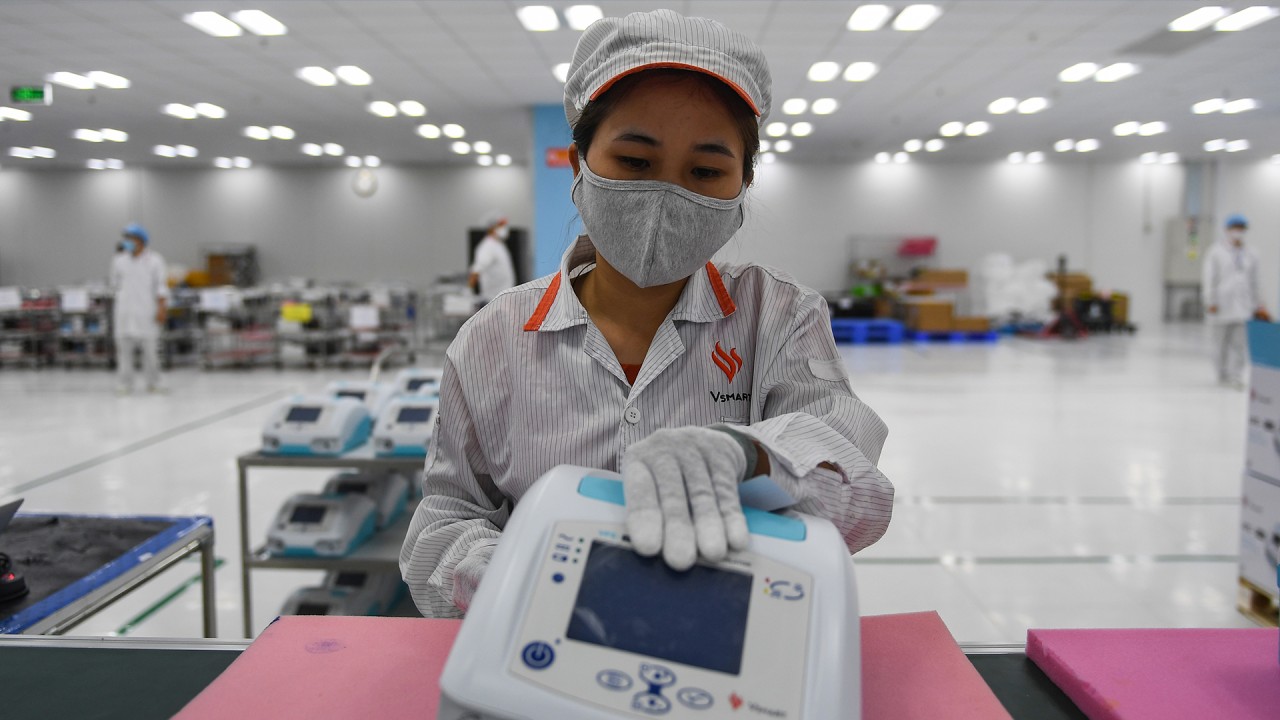
In a Trumpian world where the US is the No 1 trade victim, no country is safe
- The narrative of US goods trade deficits has been feeding Donald Trump’s sense of victimhood
- The US has picked fights with many of its trading partners, and is now targeting Vietnam for daring to improve its manufacturing and export economy
I have never known why he seems only to get excited about goods trade – what one US trade official friend calls “stuff you can drop on your foot”. Perhaps it just makes a complicated world feel comfortingly simple.
Above all, the narrative of US goods-trade deficits has for years fed in Trump a deep and improbable sense of victimhood: “We’ve been ripped off by everybody,” he said from a podium in the White House back in 2018. “Our country has been abused and taken advantage of by virtually every country that it does business with.”
And, of course, he alleges that no country has done more ripping off than China. “China has taken out of this country US$500 billion and more – a year. … And I’ve changed that around.” he said at that same White House briefing.
Latest in this unending queue of allegations of unfair trade is the threat against Vietnam to slap tariffs on its exports for “unfair currency practices” – for the cognoscenti, a so-called “Section 301 investigation”.
It is true that Vietnam has soared in the past decade as a manufacturing exporter, in particular to the US, but this surely does not make it a currency manipulator. It is today the seventh-largest supplier of goods to the US.

01:26
Vietnam ramps up ventilator production as coronavirus strikes back
Since 2009, its US exports have leapt more than five-fold to US$66.6 billion last year. Because this still-poor country of 100 million people has a limited appetite for US imports, its visible trade surplus jumped to US$55.8 billion in 2019.
This surplus may be inconsequential compared with China’s almost US$300 billion (down from US$323 billion in 2018), but for an upstart like Vietnam to be making such striking trade gains has clearly touched a raw nerve in Washington.
Who is really bleeding more from the trade war: China or the US?
I have yet to see any significant evidence of US manufacturers “making America great again” by moving manufacturing back into the US from China – and quite how a manufacturer would make America great again by transferring back jobs paying around US$300 a month in a Vietnamese factory continues to baffle me.
Business surveys from both the American Chamber of Commerce in Beijing and DHL have shown that a significant majority of companies have no intention of moving out of China.
The Trump tariff war was also intended to “decouple” China from the US economy, and there is clear frustration that this has also not happened as intended. For many US multinationals – from Walmart to GM and Tesla – China’s domestic market is simply too large and significant to be severed.
While Vietnam has undoubtedly been a grateful beneficiary of the US tariff war against China, it is essential to keep in mind the preposterous impossibility of Vietnam in any way replacing China, or deserving accusations of currency manipulation.
While foreign direct investment into Vietnam has risen steadily, from US$9.2 billion in 2014 to US$16.1 billion last year, as part of multinationals’ China-plus-one strategies, it is important to maintain perspective: FDI into China has stuck steadily at around US$130 billion since 2014 and last year amounted to US$141 billion – up 2.17 per cent from 2018 despite the US-China trade war, and still accounting for 30 per cent of all FDI into Asia.
Are investors underestimating US election tail risks?
For perspective, also recall that within the 11-municipality Greater Bay Area – which accounts for only part of just one of China’s 27 provinces – Hong Kong last year absorbed FDI of US$104 billion, and two other Greater Bay Area cities, Shenzhen and Guangzhou, together attracted as much FDI as Vietnam in its entirety.
Ridiculous as it may be to target Vietnam for its audacious efforts to improve its manufacturing and export economy, it should not surprise us that the paranoid victimhood behind Trump’s crusade against allegedly unfair trade should foment a Section 301 investigation into Vietnam’s alleged unfair currency practices.
As Aime Williams wrote recently in the Financial Times’ Trade Secrets, “it’s difficult to see this latest Section 301 investigation as anything other than an assault on companies that insist on using low-cost Asian labour and manufacturing power to create goods for the American consumer”.
“Now it seems the US is probably the only country truly safe from US import tariffs,” she concluded.
The one glimmer of hope, of course, is that American voters will next Tuesday bring an end to this destructive, dystopian absurdity. I, for one, am praying hard and counting the minutes.
David Dodwell researches and writes about global, regional and Hong Kong challenges from a Hong Kong point of view

